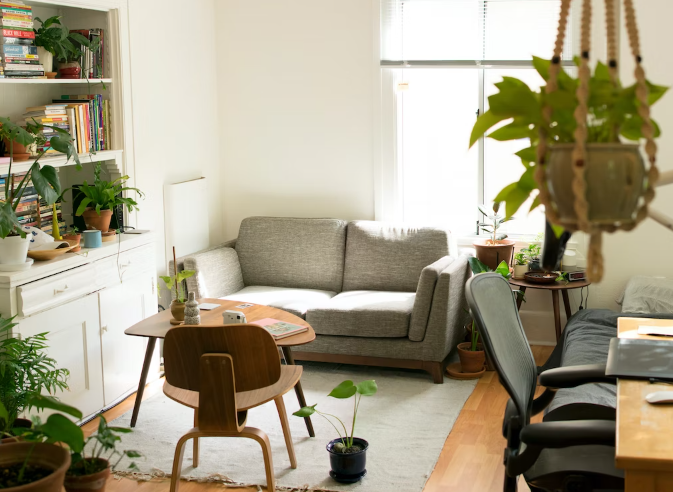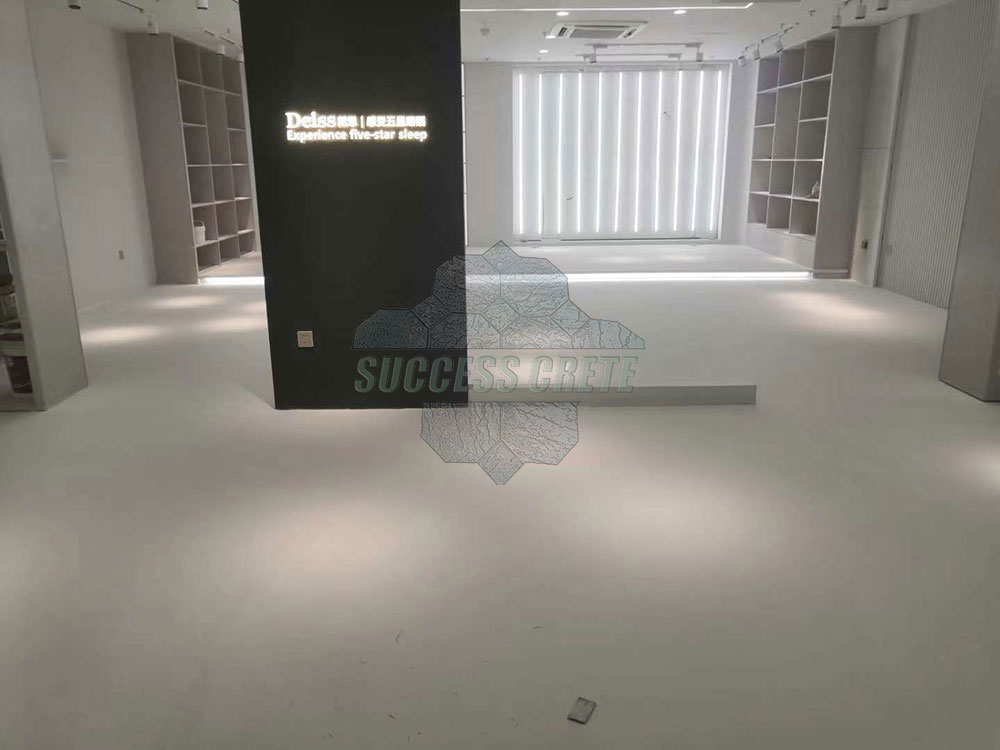Introduction
A floor leveller primer is a preparatory coating applied prior to leveling a concrete floor. This primer helps to improve the bond between the substrate and the leveling agent, creating a safer, more stable, and more durable surface.
The purpose of a floor leveller primer is to create a thin, even layer on the concrete floor that can fill in small pores, imperfections, and cracks.
This helps create a smooth and level surface for the subsequent application of leveling compounds.
Floor leveller primers can be applied to a variety of surfaces, including concrete, wood, terrazzo, tile, and existing vinyl or linoleum floors. However, it is important to select the proper primer for the type of substrate being used.
Floor leveller primers are usually water-based, which makes them easy to apply and clean up. They are available in a range of colors, including clear, gray, and white, which can be used to match the color of the leveling compound being used.
Floor leveler primers are typically applied using brushes, rollers, or spray equipment and may require multiple coats depending on the condition of the substrate and the specific product used.
Always follow the manufacturer’s instructions for mixing, application, and drying time to ensure proper adhesion and performance of the subsequent flooring system.
In summary, floor leveler primers are an important part of any successful flooring project as they help to improve the bond between the substrate and leveling agent, creating a smooth, flat, and durable surface.
Today’s article is about the following:
- What is floor leveller primer
- The benefits of floor leveller primer
- How to apply floor leveller primer properly
- Floor leveller primer-quality products in the USA
- What primer to use for the floor leveller?
What is floor leveller primer?
Floor leveler primer is a type of preparatory material used to prime and seals the surface of a subfloor before applying a self-leveling compound.
It is typically used in construction and renovation projects to create a smooth and level surface for the installation of new flooring materials, such as tile, hardwood, or carpet.
Floor leveller primer is typically a water-based solution that is applied with a brush, roller, or sprayer. It is designed to penetrate and seal the surface of the subfloor, creating a strong bond between the self-leveling compound and the subfloor. This helps to prevent the self-leveling compound from cracking or delaminating over time.
Floor leveller primer is typically used on concrete, wood, or other porous surfaces that may be prone to moisture or dust.
It is important to use the correct type of primer for the specific subfloor material, as different materials may require different types of primers to achieve the best results.
In addition to its bonding and sealing properties, floor leveller primer may also provide some degree of moisture resistance, helping to prevent moisture from penetrating the subfloor and causing damage to the flooring above.
Overall, floor leveller primer is an important step in creating a smooth and level surface for new flooring installations, and can help to ensure that the flooring remains stable and durable over time.
The benefits of floor leveller primer
When preparing to install a new floor, it’s important to ensure that the subfloor is level and smooth. This is where floor leveler primer comes in – a product designed to level out subfloors before laying down new flooring. In this article, we’ll discuss the benefits of using floor leveler primer.
Improves Adhesion:
One of the primary benefits of using floor leveller primer is that it helps to improve the adhesion of your new flooring.
When a subfloor is uneven or rough, it can be difficult for flooring materials like tile, vinyl, or hardwood to bond properly.
However, by applying a floor leveler primer to the subfloor, you create a smooth and level surface that promotes better adhesion.
Saves Time and Money:
Using floor leveller primer can also help to save you time and money in the long run. When a subfloor is not level, it can cause issues with the installation of new flooring. This can result in costly repairs and even having to replace the entire floor.
By using a floor leveller primer, you can avoid these issues and ensure that your new flooring is installed correctly the first time.
Creates a Smooth Surface:
Another benefit of using floor leveller primer is that it creates a smooth surface for your new flooring. Uneven subfloors can cause bumps and dips in your new flooring, which can be unsightly and even dangerous.
By using floor leveler primer, you can create a level surface that makes your new flooring look and feel smooth and even.
Resolves Moisture Issues:
Floor leveller primer can also be used to address moisture issues in subfloors. Moisture can cause a variety of problems for flooring materials, such as warping, buckling, or mold growth.
By using a floor leveller primer that is designed to resist moisture, you can create a barrier that protects your new flooring from these issues.
Increases Durability:
Finally, using floor leveler primer can increase the durability of your new flooring.
By creating a smooth and level surface, your flooring will be better equipped to withstand everyday wear and tear. Additionally, floor leveler primers can be mixed with reinforcement fibers or used as a primer for specialized coatings to enhance the strength of the subfloor.
In conclusion, using a floor leveller primer is an important step in preparing your subfloor for new flooring. It can improve adhesion, save time and money, create a smooth surface, address moisture issues, and increase durability.
Before starting your next flooring project, consider using a floor leveler primer to ensure the best possible outcome.

How to apply floor leveller primer properly
When it comes to installing a new floor, one of the most important steps is preparing the subfloor.
A properly leveled subfloor is crucial for ensuring the longevity and stability of your new floor.
One way to level your subfloor is by using a floor leveller primer. Here are some tips for applying floor leveller primer properly:
Select a product appropriate for the installation:
There are various types of floor leveller primers available on the market, each designed for specific applications. Before purchasing a product, determine what type of subfloor you have and what type of flooring you will be installing.
For example, if you are installing a wood floor, you will need a product that is compatible with wood substrates.
Know your substrate:
It’s essential to know the type of subfloor you will be working with, whether it is concrete, wood, or any other material. This will help you choose the right product and understand how to prepare the surface properly.
Prepare your substrate:
Before applying a floor leveler primer, you need to ensure that the substrate is clean, dry, and free from any debris, oil, or grease.
Any imperfections, such as cracks or holes, should be repaired before the primer is applied. This will help ensure the primer adheres correctly.
Proper water demand:
When mixing the floor leveller primer, it’s important to use the right amount of water. Follow the manufacturer’s instructions carefully, as using too much or too little water can impact the quality of the primer and the levelness of the subfloor.
Product and ambient temperature:
The temperature of both the product and the ambient temperature can affect the curing time of the floor leveller primer.
It’s important to keep the product at room temperature before use and make sure the room is at the right temperature before and after the primer is applied.
Use as recommended:
Follow the manufacturer’s instructions when applying the floor leveller primer. This includes mixing the product properly, applying it evenly, and allowing it to cure for the recommended time before installing the new flooring.
Protect your freshly poured underlayment:
Once you’ve applied the floor leveller primer, you need to protect the freshly poured underlayment. Avoid any foot traffic or other activities that could damage the surface while it is curing.
Follow the manufacturer’s instructions for the recommended cure time before installing the new flooring.
In conclusion, applying a floor leveller primer is an essential step in preparing your subfloor for a new floor installation.
Make sure to select the right product for your installation, properly prepare your substrate, use the correct amount of water, consider product and ambient temperature, use the product as recommended, and protect your freshly poured underlayment.
By following these tips, you can ensure that your new floor is installed on a level and stable surface, providing years of enjoyment and durability.

Floor leveller primer-quality products in the USA
Here are some good quality floor leveler and primer products in the USA along with their websites:
Henry 555 LevelPro: Henry 555 LevelPro is a premium, high-performance floor leveler and primer that can be used on a wide range of substrates. It provides a smooth, flat surface that is ideal for installing vinyl, carpet, or tile.
The website for Henry 555 LevelPro is this.
Mapei Planipatch: Mapei Planipatch is a fast-setting, cement-based floor leveler and primer that can be used on interior and exterior substrates.
It can be used to level floors, repair cracks, and holes, and smooth out rough surfaces.
The website for Mapei Planipatch is this.
TEC Skill Set Self-Leveling Underlayment: TEC Skill Set Self-Leveling Underlayment is a high-performance floor leveler and primer that can be used on a wide range of substrates. It
provides a smooth, flat surface that is ideal for installing tile, carpet, or vinyl. The website for TEC Skill Set Self-Leveling Underlayment is this.
What primer to use for the floor leveller?
What is primer?
Pre-Pour Primer is a ready-to-use dispersion primer used to seal the substrate prior to the placement of sucesscrete self-leveling compound (SLC). The pre-applied primer will help stop pinhole hernias in the finished product and will greatly improve the adhesion of the SLC.
Precoat can also be used as a binder for many cementitious tile adhesives prior to fixing and laying tiles to old tiles, well-supported wood substrates, and other smooth surfaces.
Priming is critical prior to the application of hot wire self-leveling compounds.
Failure to properly prime will result in reduced adhesion to the floor, reduced flow, and a greatly increased incidence of pinholes in the finished product. Pre-pour primer should be applied directly from the container and should not be diluted.
The surface must be dry, intact, and free of dirt, dust, and separators.
Apply the pre-grout evenly in a transverse manner with a short pile paint roller or paintbrush. The drying time of the primer is approximately 40-60 minutes at 50% relative humidity and 20°C.
A further application is only possible after the first layer has dried thoroughly.

What primer to use for the floor leveller?
Floor leveling is an essential process whose purpose is to create a smooth and even surface for the flooring installation.
In order to achieve successful and long-lasting results, it is important to choose the right primer for your floor leveler.
A primer is a pretreatment solution that is applied to the surface prior to the application of a floor leveler to ensure proper adhesion and a smooth surface.
First, let’s talk about the importance of using a primer for floor leveling. Primers are designed to improve the bond between the floor leveler and the substrate.
They help seal the surface, reduce dust, and improve the adhesion of the floor leveler.
Without a primer, the floor leveler may not bond properly to the surface, resulting in a weak and unstable floor.
When it comes to choosing the right primer for a floor leveler, there are several options on the market.
The two most common types of primers are water-based and solvent-based primers.
Water-based primers are usually easier to use and less toxic than solvent-based primers. They are suitable for use on porous surfaces, such as concrete and wood.
They are also easy to clean up with water, making them a more environmentally friendly option.
Solvent-based primers, on the other hand, are more durable and have better adhesion to non-porous surfaces such as metals, tiles, and glazes.
They also have greater resistance to moisture, making them ideal for use in wet areas such as bathrooms and kitchens.
It is important to note that not all primers are suitable for all types of floor levelers. It is advisable to consult the manufacturer’s guidelines to ensure that the primer and floor leveler are compatible.
Another factor to consider when selecting a primer is drying time. The drying time of a primer will vary depending on the type of primer and environmental conditions.
It is important to choose a primer that has the right drying time for the project schedule.
In general, water-based primers have shorter drying times than solvent-based primers.
In summary, choosing the right floor leveler primer is critical to achieving a smooth and long-lasting floor. Water-based primers are generally easier to apply and less toxic, while solvent-based primers provide better adhesion to non-porous surfaces.
When selecting a primer, it is important to consult the manufacturer’s guidelines and consider drying time.





